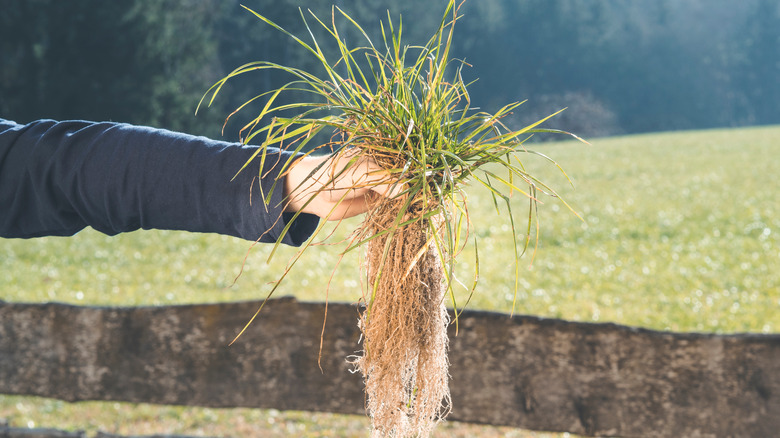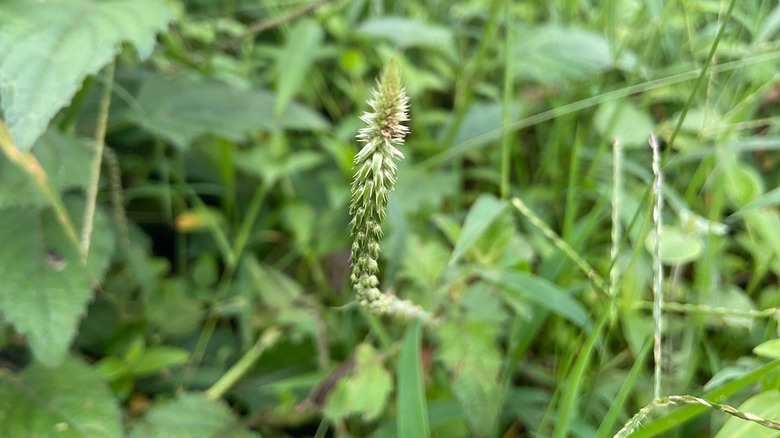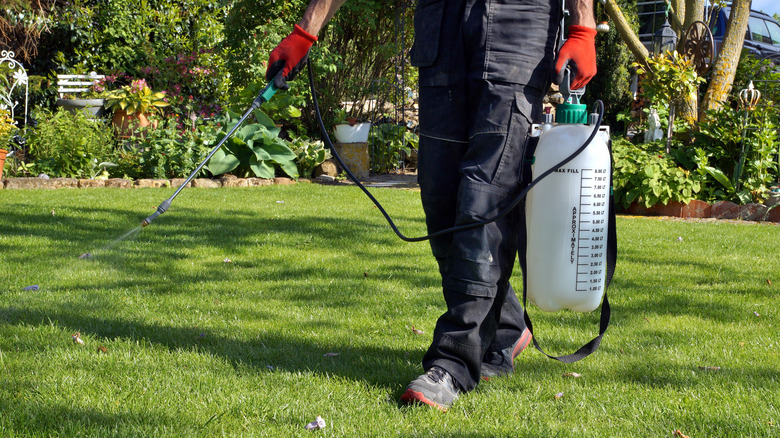How To Spot The Difference Between These Two Popular Lawn Weeds
If you find yourself staring down at some unruly grass on your lawn, it might be one of several types of weeds, including crabgrass or dallisgrass. So, where do these grassy invaders come from? Crabgrass hails originally from Europe and has made its way virtually worldwide. Dallisgrass, on the other hand, is a South American native — it's the transplant that got a little too comfortable in its new surroundings, particularly in the southern United States. Both types of grass can be intrusive and may require specific treatments to control them. Weeds are the freeloaders of the plant world. They show up uninvited and take resources like water, nutrients, and sunlight that could have gone to your chosen plants. In essence, the term "weed" pretty much refers to any plant growing where we don't want it to.
It's important to remember that they are resilient, adaptable, and sometimes downright invasive. They've developed various survival strategies, ranging from rapid seed production to resistance against common herbicides. Yes, some weeds are starting to evolve in a way that makes them tougher to kill with traditional methods. Effective treatment of both of these weeds starts with accurate identification. By understanding the characteristics of crabgrass and dallisgrass, you're better equipped to take the appropriate action to rid your lawn of these unwelcome guests, whether using herbicides or opting for more drastic measures like sodding.
Identifying crabgrass vs. dallisgrass: what do they look like?
First, look at the seed heads to tell the difference between the two weeds. Crabgrass has fine, almost delicate seed heads that blend well with your lawn. Conversely, dallisgrass comes in strong with larger, more noticeable seed heads, complete with black spots. Taking a step back, the way these grasses grow tells you another part of the story. Crabgrass sprawls out, almost like it's stretching its arms in all directions — think crab-like or star-like shapes. Dallisgrass, on the other hand, grows in circles and clumps together, making itself known by sticking out like a sore thumb on your lawn.
Color-wise, there are hints too. Dallisgrass tends to be darker, more gray-green, whereas crabgrass usually gives off a lighter green shade. Both crabgrass and dallisgrass have their own survival strategies that they've perfected over time. Crabgrass spreads quickly, covering much ground, while dallisgrass is more localized, thanks to its deep roots. And let's talk about those tall seed stalks on dallisgrass. When combined with its deep root, dallisgrass becomes a tough nut to crack regarding control. And there's another thing. Not all weeds are created equal when it comes to their life cycles. Dallisgrass falls into the perennial category, which makes it all the more challenging to deal with in the long term.. On the other hand, crabgrass is an annual, but it's prolific at spreading its seeds, setting you up for future invasions.
How to get rid of dallisgrass and crabgrass: control measures
If it's crabgrass you want to eiminate, consider yourself somewhat lucky. This type of grass is generally easier to control. A robust weed control program that includes pre- and post-emergent herbicides typically keeps crabgrass in check. These chemicals inhibit seed germination and kill existing plants, making it possible to reclaim your lawn over time. But let's not get too comfortable — consistency is key here. You must apply these treatments at the right times throughout the growing season to see lasting results. However, if dallisgrass is the main problem, the control measures are more drastic. Because dallisgrass grows in thick clumps and has deep roots, it can be extremely difficult to eradicate. While herbicides can work to some extent, they often fail to eliminate dallisgrass completely. In such challenging cases, sodding is frequently recommended. This involves removing the affected lawn areas entirely and replacing them with healthy sod. Think of it as a lawn makeover, but it can save you from continued headaches in the long run.
Even after sodding, it's crucial to stay vigilant. Maintaining a regular lawn care routine helps prevent any dallisgrass resurgence. This means proper fertilization and regular mowing are non-negotiable. A well-fed and trimmed lawn is a strong defense against future dallisgrass invasions. If you feel you're not winning your battle against this weed, professional help might be the next logical step.


